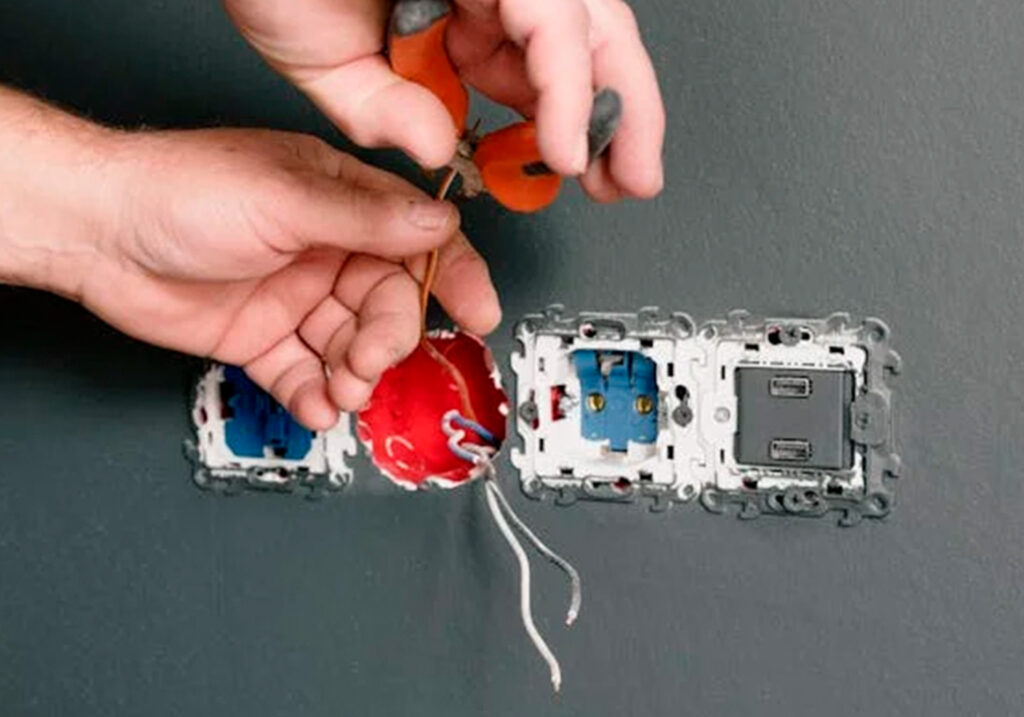People tend to forget that a garage is supposed to be one of the more functional spaces in their property. It is not just a place to park your vehicles; people can do so many things with their garage.
And, because of this, garages should be well-lit and be kept safe.
Garages are multifunctional spaces often used for parking vehicles, storage, and various DIY projects. Due to the heavy use of electrical tools, appliances, and lighting, garages pose unique electrical safety challenges. Ensuring electrical safety in your garage is critical to preventing hazards such as fires, electrical shocks, and property damage. This comprehensive guide explores practical strategies for enhancing electrical safety in your garage.
Understanding Electrical Hazards in Garages
Garages are inherently prone to electrical hazards due to their diverse usage and environmental conditions. Often serving as storage spaces for flammable liquids, workshops for power tools, or areas for car maintenance, garages pose several risks. Moisture from leaks, condensation, or weather exposure can come into contact with electrical components, increasing the chances of short circuits or electrical shocks. Additionally, the frequent use of high-powered tools and appliances in garages places significant demand on electrical systems, potentially leading to overloaded circuits and outlets.
Another major concern is faulty or damaged wiring, which can result from aging electrical systems, rodent damage, or improper installations. Many homeowners also misuse extension cords by connecting multiple devices or using them as permanent wiring solutions, which can cause overheating and fires. Inadequate grounding of electrical systems further exacerbates these risks by preventing proper energy discharge during power surges, increasing the chance of electrical fires.
Recognizing these common hazards is essential for maintaining a safe garage environment. By identifying risks such as overloaded circuits, faulty wiring, improper use of extension cords, and moisture exposure to electrical systems, homeowners can take proactive steps to mitigate dangers. Implementing targeted safety measures, including proper maintenance and mindful use of electrical devices, significantly reduces the risk of accidents and ensures a safer space for work and storage.
Install Ground Fault Circuit Interrupters (GFCIs)
Ground Fault Circuit Interrupters (GFCIs) are essential for any garage electrical system. These devices detect imbalances in electrical currents and shut off power to prevent electric shocks. Moisture and damp conditions in garages increase the risk of ground faults, making GFCIs a crucial safety feature.
It’s critical to install GFCIs on all outlets, especially those near workbenches, sinks, or areas where power tools are frequently used. This setup ensures that any unexpected electrical faults are quickly addressed, minimizing the risk of electric shock. Additionally, garages often have outdoor-facing outlets, which are also highly susceptible to moisture exposure, making GFCIs indispensable in these locations.
Regular maintenance of GFCIs is equally important. Homeowners should routinely test these devices using the built-in test button to ensure they are functioning correctly. Any malfunctioning GFCI should be replaced immediately to maintain a consistent safety standard. By keeping GFCIs in proper working condition, you can significantly reduce the risk of electrical accidents in your garage.
Upgrade Electrical Wiring
Outdated or damaged wiring poses a significant fire risk, especially in garages where high-powered tools, appliances, and equipment are frequently used. Many older garages were not initially designed to handle the electrical demands of modern households, leading to overloaded circuits and increased potential for overheating. Frayed, cracked, or exposed wires can spark and ignite flammable materials commonly stored in garages, such as gasoline, paint, and cleaning solvents. Over time, wiring insulation can degrade due to temperature fluctuations, moisture, and physical wear, making it even more susceptible to electrical faults. Addressing these risks by updating the wiring system is critical for ensuring a safe and functional garage.
To mitigate these hazards, it’s important to hire a licensed electrician to conduct a thorough inspection of your garage’s electrical system. A professional can identify hidden issues, such as overloaded circuits, outdated breaker panels, or improperly installed wiring. Based on this assessment, the electrician can recommend essential upgrades, such as installing dedicated circuits for heavy-duty equipment or replacing deteriorated wiring with modern, insulated cables. Using wiring encased in metal or PVC conduit adds an extra layer of protection against physical damage and exposure to moisture, both of which are common in garages. This protective casing prevents accidental cuts, rodent damage, and water infiltration that could lead to short circuits or fires.
Additionally, ensuring that all electrical work complies with local building codes and electrical standards is vital for safety and legality. Modern electrical codes are designed to address current energy demands and safety concerns, making compliance essential for preventing accidents and potential liability issues. Upgrading to grounded outlets, installing appropriate circuit breakers, and using high-quality materials can significantly reduce the risk of electrical fires. Investing in professional wiring upgrades not only protects your property and loved ones but also increases the overall functionality and value of your garage space. Regular maintenance and inspections further ensure that the system remains safe and efficient over time.
Use Heavy-Duty Extension Cords Properly
Extension cords are common in garages but can become serious hazards when misused. Avoid using lightweight or household extension cords for high-powered tools. Instead, opt for heavy-duty, grounded extension cords rated for outdoor or industrial use.
Never daisy-chain multiple extension cords or run them under rugs, through doorways, or across pathways where they can be damaged. Store cords properly when not in use and replace any frayed or damaged cords immediately.
Avoid Overloading Circuits
Garages often house numerous electrical devices, from power tools to lighting and heating units. Plugging multiple devices into a single outlet or circuit can overload the system, leading to overheating and potential fires.
Distribute electrical loads evenly across circuits and outlets. Consider installing additional outlets to accommodate high-powered tools. Using surge protectors for sensitive electronics can also prevent damage from power surges.
Maintain Dry Conditions
Moisture is a significant contributor to electrical hazards. Water can corrode wiring, cause short circuits, and increase the risk of electrical shocks. To minimize moisture risks, ensure your garage is well-ventilated and protected from water leaks.
Install weatherproof electrical outlets and covers, particularly in areas prone to moisture exposure. Keep electrical devices elevated off the floor and away from water sources. Consider using a dehumidifier to maintain dry conditions, especially in humid climates.
Organize and Declutter Electrical Areas
Clutter can obstruct access to electrical panels and outlets, making it challenging to maintain safe electrical practices. Keep workspaces organized and ensure clear access to circuit breakers and emergency shutoffs.
Avoid storing flammable materials near electrical equipment. Organize tools and cords to prevent accidental damage and tripping hazards. Implement storage solutions that keep electrical components off the floor and away from high-traffic areas.
Install Adequate Lighting
Poor lighting can lead to accidents and improper use of electrical tools. Install bright, energy-efficient LED lighting throughout the garage to illuminate workspaces and storage areas. Task lighting can improve visibility for detailed work, reducing the risk of mishandling electrical equipment.
Ensure light fixtures are securely installed and appropriate for the garage environment. Replace burned-out bulbs promptly and check for flickering lights, which could indicate electrical issues.
Regular Electrical Inspections
Routine electrical inspections are vital for identifying potential hazards before they become dangerous. Hire a licensed electrician to conduct annual inspections of your garage’s electrical system. They can detect issues like deteriorating wiring, overloaded circuits, and malfunctioning outlets.
During inspections, ensure that all outlets, switches, and wiring meet current electrical codes. Address any issues promptly and document inspection results for future reference.
Safe Usage of Power Tools and Equipment
Power tools are commonly used in garages and require proper handling to prevent electrical hazards. Always inspect tools for frayed cords, exposed wires, and damaged plugs before use. Follow the manufacturer’s safety instructions and disconnect tools when changing accessories or making adjustments.
Store power tools in dry, secure locations and avoid using them near flammable materials. Utilize tools with built-in safety features, such as double insulation and grounded plugs, for added protection.
Emergency Preparedness
Preparing for electrical emergencies can significantly reduce the impact of accidents. Install smoke detectors and fire extinguishers in the garage, and test them regularly. Ensure that all household members know how to shut off the main power supply in case of an emergency.
Keep a first aid kit accessible and familiarize yourself with basic first aid procedures for electrical injuries. Clearly label circuit breakers and provide emergency contact information in visible locations.
Implement Surge Protection
Power surges can damage electrical devices and increase the risk of fires. Install surge protectors to safeguard sensitive equipment and tools. Whole-house surge protectors provide comprehensive protection by diverting excess voltage away from connected devices.
Regularly check surge protectors for signs of wear and replace them as needed. Avoid overloading surge protectors by plugging in too many devices, as this can negate their protective benefits.
Conclusion
Electrical safety in your garage is essential for preventing fires, injuries, and property damage. You can create a safer environment for all your activities by implementing proactive safety measures. Regular inspections, safe tool usage, and emergency preparedness further enhance safety and ensure that your garage remains a functional and secure space. Prioritizing electrical safety protects not only your property but also the well-being of everyone who uses the garage.

